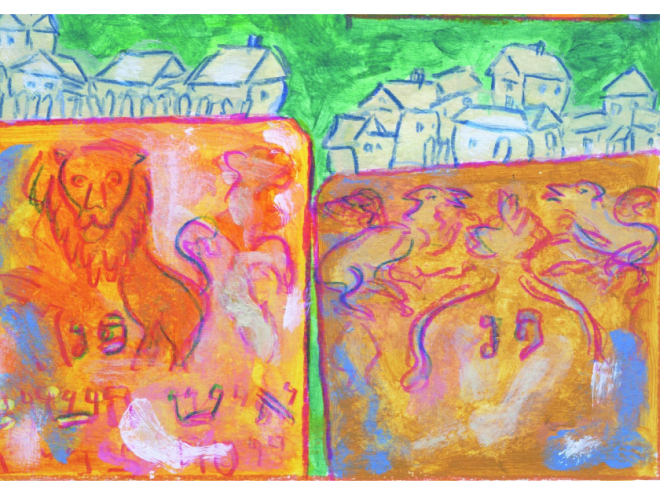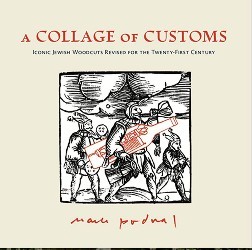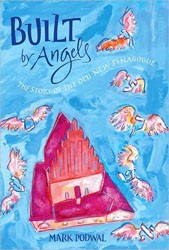“With wonders and miracles, the sky over Jerusalem touches the world below.” The first sentence in Podwal’s beautifully illustrated paean to Jerusalem captures its theme. Drawing on strands of legend, he celebrates the sky above the city and the places in Jerusalem that are sacred to Jews, Christians, and Moslems. Each page of short, poetic narrative is faced by an illustration that blends the realistic with the symbolic: a heavenly ladder reaching down toward Jerusalem, the morning sun’s red rays, the full moon above Solomon’s Temple, the star that announced Jesus’ birth, Muhammad’s white horse on its heavenly journey. Several double page spreads evoke the destruction of the Temple, the Church of the Holy Sepulcher, and the Noble Sanctuary, with its golden dome repeated in the sun shining overhead. Podwal’s talent as a colorist is fully apparent in these illustrations while his words capture Jerusalem’s sacred place in the three monotheistic religions. They end optimistically, with rainbows over the city, showing that “hope lights the Jerusalem sky.” This is quite a different view of Jerusalem than the no-less-true one offered in Sylvia Rouss’s Tali’s Jerusalem Scrapbook (Pitspopany, 2003) and more similar to Karla Kuskin’s Jerusalem Shining Still (Harper and Row, 1987), and Jane Yolen’s O Jerusalem (Blue Sky Press, 1996). Together, they give children a sense of the contradictions that must inform any understanding of Jerusalem. For ages 9 – 12.

Children’s
Jerusalem Sky: Stars, Crosses, and Crescents
- Review
By
– August 6, 2012
Linda R. Silver is a specialist in Jewish children’s literature. She is editor of the Association of Jewish Libraries’ Jewish Valuesfinder, www.ajljewishvalues.org, and author of Best Jewish Books for Children and Teens: A JPS Guide (The Jewish Publication Society, 2010) and The Jewish Values Finder: A Guide to Values in Jewish Children’s Literature (Neal-Schuman, 2008).
Discussion Questions

Jewish literature inspires, enriches, and educates the community.
Help support the Jewish Book Council.



